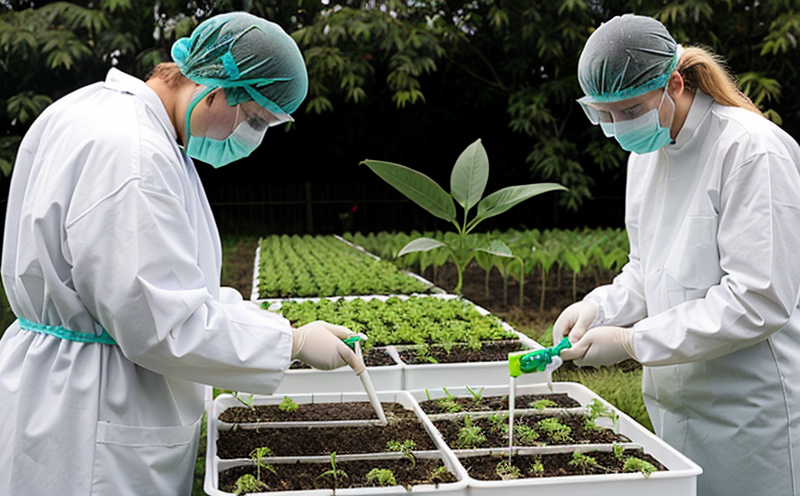Powdery Mildew Pathogen Testing
Understanding the impact of powdery mildew on plants is crucial in agriculture and forestry. Powdery mildew (Erysiphe necator) is a fungal pathogen that affects numerous crops, including grapes, cucurbits, beans, and many other plant species. This disease can significantly reduce crop yield and quality, leading to substantial economic losses for farmers.
The testing of powdery mildew involves the identification and quantification of this fungus in plant samples. Accurate pathogen testing ensures that growers are equipped with essential information needed to implement effective control strategies. These strategies may include cultural practices, resistant cultivars, or fungicides.
Our laboratory specializes in providing reliable and accurate powdery mildew pathogen tests using advanced diagnostic techniques. By leveraging cutting-edge technology and expertise, we offer comprehensive testing services that are essential for quality management and compliance with international standards.
The process begins with the collection of plant samples from affected areas. These samples are carefully prepared in our laboratory to ensure the integrity of the specimen. Our team then utilizes sophisticated instruments such as microscopes and molecular diagnostics to identify and quantify the presence of powdery mildew spores.
Our testing approach adheres to international standards, including ISO 17025 for quality management systems in laboratories. This ensures that our results are both accurate and reliable. Compliance with these standards is paramount for ensuring the validity and robustness of our findings.
The results from powdery mildew pathogen testing provide valuable insights into the health status of plant populations. Growers can use this information to make informed decisions regarding crop management practices. Additionally, it helps in monitoring the effectiveness of control measures implemented against the disease.
Scope and Methodology
| Sample Preparation | Microscopy Analysis | Molecular Diagnostics |
|---|---|---|
| Sampling of affected plant parts to ensure representative samples. | Examination under light microscopy for direct visualization of powdery mildew spores. | Use of PCR-based methods to quantify the pathogen in the sample. |
| Environmental Factors | Sampling Frequency | Acceptance Criteria |
|---|---|---|
| Climate, plant species, and growth stage influence the prevalence of powdery mildew. | Sampling should occur at least twice during the growing season to monitor disease progression. | The presence of powdery mildew spores is considered indicative if their concentration exceeds a threshold set by industry standards. |
In addition to these tests, our laboratory also offers services for other plant diseases and pathogens. This comprehensive approach ensures that clients receive a holistic understanding of the health status of their crops.
Why Choose This Test
Accurate powdery mildew pathogen testing is vital for several reasons:
- Early Detection and Control: Early identification of the disease allows for timely intervention, preventing further spread and minimizing crop losses.
- Implementing control measures promptly can significantly reduce the impact on yield and quality.
- Compliance with Regulations: Many agricultural regions have strict regulations regarding plant health. Compliance testing ensures that products meet these requirements, facilitating trade and ensuring consumer safety.
Environmental and Sustainability Contributions
The ability to accurately monitor powdery mildew plays a crucial role in promoting sustainable agricultural practices:
- Reducing Chemical Use: By identifying the presence of the pathogen early, growers can optimize their use of fungicides, thereby reducing unnecessary chemical applications.
- This approach not only saves resources but also minimizes environmental impact by decreasing the amount of chemicals released into the ecosystem.
- Enhancing Crop Health: Sustainable management practices lead to healthier crops, which are more resilient and better able to withstand other stressors such as pests or drought.





